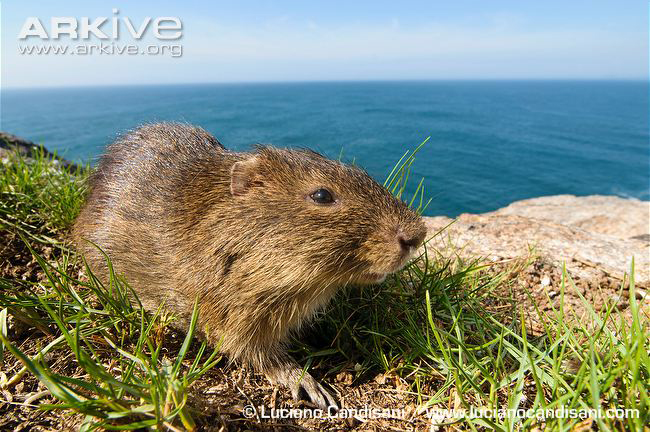Santa Catarina’s Guinea Pig (Cavia intermedia) is one of the rarest species on the planet because of its very small population size (approximately 24-60 individuals). This species has one of the world’s smallest geographical distributions of any mammal. It is found in an area of only 4 ha in Serra do Tabuleiro State Park, on Moleques Island do Sul, in the state of Santa Catarina, Brazil. This island itself only has a surface area of 10.5 ha.
Key Species Champion
Carlos Henrique Salvador
How this species is doing
Pressure
The species is thought to be threatened by hunting. Both the island and protected area in which it occurs are freely accessible and enforcement is not strict. With such a small population size and range, the species is particularly vulnerable both to hunting and to natural disasters.
Responses
The species occurs in Serra do Tabuleiro State Park, which may receive funds from the Global Environment Facility (GEF) for the conservation of biodiversity and ecosystem rehabilitation. The species’ habitat has been designated a Preservation Zone, and all entry is prohibited. However, this park is unmanaged and the park status and entry prohibition are not enforced. Enforcement of the Preservation Zone that encompasses this species’ range needs to be accomplished.
Knowledge level
The species is considered to be most closely related to the mainland greater guinea pig, C. magna, from which it diverged after Moleques do Sul Island was isolated by rising sea levels about 8,000 years ago. The reproduction and growth rates of C. intermedia are reduced by caviomorph standards; reproductive rates are low (78% of pregnant females with a single offspring), young are born quite large (19% of adult females’ weight), and sexual maturity is reached quite late (at around 59 days). Home-range size for C. intermedia (0.17 ha) is small in relation to home-range size for C. magna. Population density is estimated to be 6.6 individuals/ha. Mammalian predators are absent from Moleques do Sul Island and raptors are the only potential predators.








